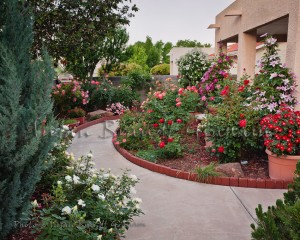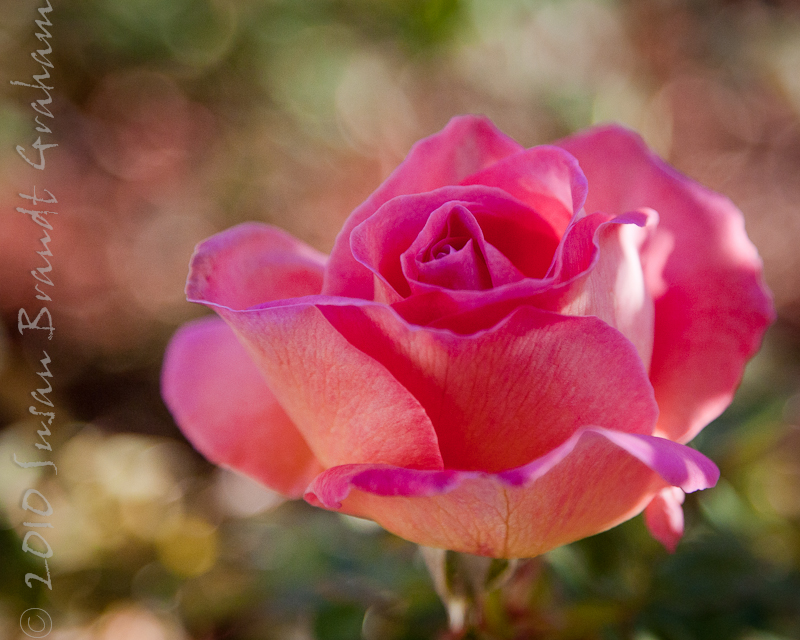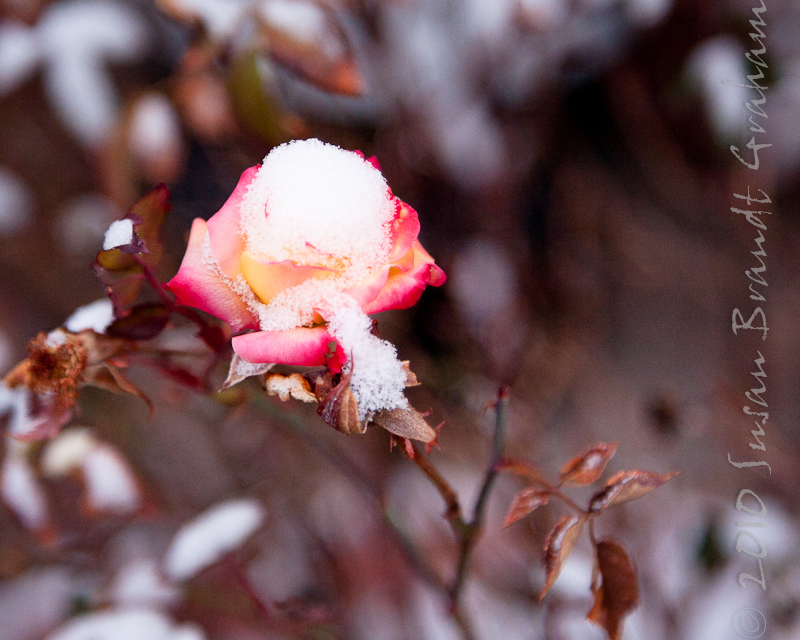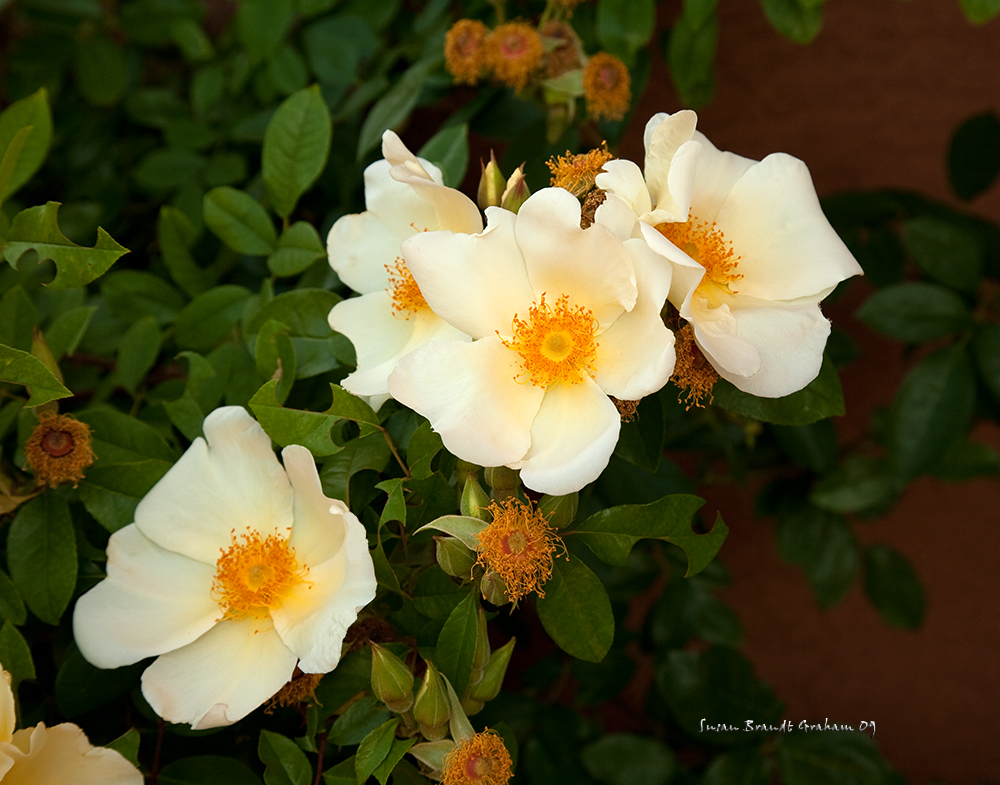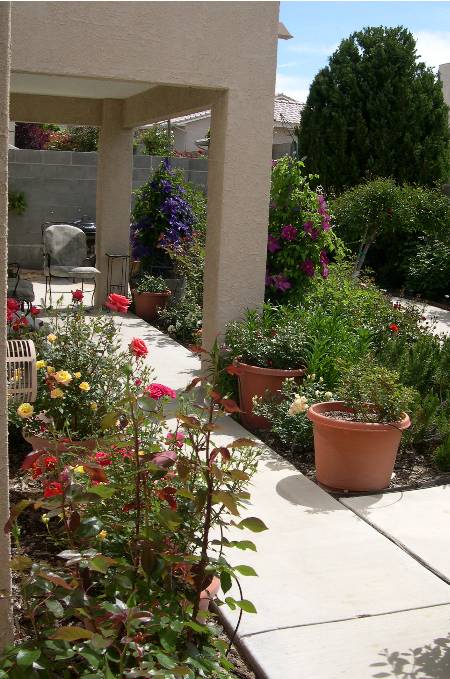February Gardening
Challenges of Gardening in the High Desert in February
February gardening in New Mexico? Well, that can be both a temptation and a challenge. Here in Albuquerque we are in the midst of a series of warm, sunny days without wind; perfect gardening weather!
The problem is, our average latest frost-free date is in mid-April, and I have seen killing freezes as late as May. When it comes to roses, for example, we tend not to prune until early April, and fertilize even later.
Fortunately, there is no shortage of things to do in the garden in February when the days are so wonderful for being out. I did some weeding; I need to do a lot more before Spring really does arrive! I removed some dead canes from some of the roses. This is not pruning; this is removing dead canes, plain and simple.
I couldn’t help looking over my own-root miniature roses in containers, in protected areas. Some of these have not been appropriately pruned in some time. They always start to leaf out in February, and by the time another 6-8 weeks go by, they are virtually impossible to prune. The canes become spindly, and the blossoms smaller and with less perfect form.
February Gardening – I took a chance with some of these own-root miniature roses, in containers, in protected spots, and pruned them. Several different outcomes are possible with this February Gardening action:
-
these miniature roses could look better than they have in years;
-
these miniature roses could die back to the ground with a really severe cold snap, but since they are own-root, most would come back, although it might take time;
-
the majority could look like they always have.
I want to stress that I did this only with own-root roses in protected areas, for this February gardening and rose pruning action.
This is not the only time I have gone against conventional wisdom in the pruning of some of my roses. Some of you know that I have the Old Garden Rose, ‘Mermaid,’ a Hybrid bracteata introduced in 1918. After its near-demise in the 22 inch snow (“The Big Snow of 2006”), I always cut it back in the fall, and then do not trim it again until after first bloom. It has rewarded me with lush spring growth and spectacular first blooms. It then blooms intermittently throughout summer and fall.
But, this is the first time I have pruned any roses as part of February gardening in Albuquerque. I’ll keep you updated on the result.
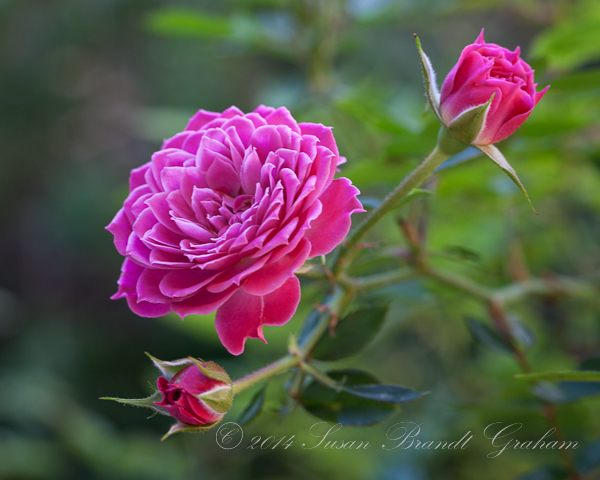
Miniature rose ‘Marriotta.’ On its own root, and grown by me in a container in a protected spot. Image from Fall, 2014.


